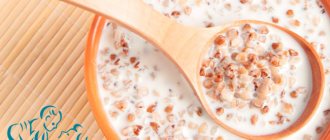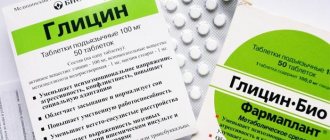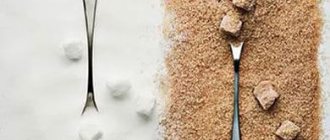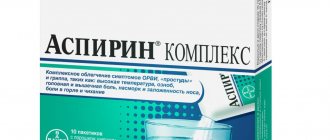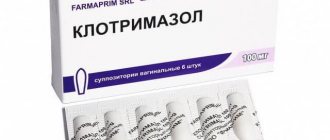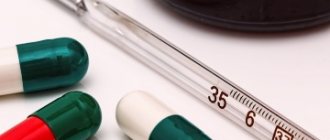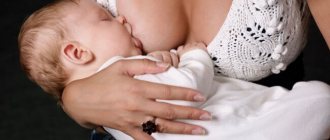Types of staphylococci
Staphylococci are spherical bacteria with sizes ranging from 0.6 to 1.2 microns. They are gram-positive and nonmotile.
- Staphylococcus aureus. This is an opportunistic microorganism that is present everywhere and under favorable conditions and in the required concentration can cause various pustular skin lesions, otitis, conjunctivitis, etc.
- Staphylococcus epidermidis. It is also an opportunistic microorganism that is normally found in healthy people. Staphylococcus epidermidis lives in the upper layer of the skin, as well as on the mucous membranes of the mouth, nose, and external auditory canal. Under favorable conditions: decreased immunity, stress, skin trauma, it can cause inflammatory processes of a purulent nature.
In addition to the types of staphylococci listed above, there are also such types as: saprophytic and hemolytic staphylococci. Saprophytic staphylococcus lives on the mucous membranes of the urethra and external genitalia. May cause cystitis and urethritis. Hemolytic staphylococcus is present mainly in the armpits and in the external genital area. Causes purulent inflammation in the respiratory system, gastrointestinal tract, and skin.
Treatment of staphylococcus
Treatment is prescribed only when a certain type of bacteria is not just detected in the body, but symptoms of the disease appear and we are talking about a staphylococcal infection.
The most aggressive type of staphylococcus is aureus, which is not afraid of many antibiotics and antiseptics. However, scientists have found that the bacterium is afraid of ordinary Zelenka, which is found in almost every first aid kit. Therefore, all skin diseases caused by staphylococcus can and should be treated with Zelenka.
Staphylococcus aureus is afraid of ordinary brilliant green
Treatment of staphylococcal infection is prescribed depending on the severity of the symptoms of the disease:
- In severe cases, antibiotics are prescribed. Nursing mothers are usually prescribed Clarithromycin, Azithromycin, Amoxicillin for oral administration for 12–14 days. While taking antibiotics, a woman is advised not to breastfeed her baby. If a baby has a severe infection, antibiotics approved for children may be prescribed to him as well.
- To treat nipples, Chlorophyllipt (bactericidal and anti-inflammatory agent) is prescribed.
- Staphylococcal bacteriophages and probiotics. They can be prescribed to both mother and child to reduce the number of bacteria and normalize the intestinal microflora.
- Enterosgel and Smecta are prescribed for loose stools. The drugs help normalize stool and neutralize the negative effects of substances secreted by staphylococci.
- For vomiting and diarrhea, oral rehydration medications may be prescribed to avoid dehydration. These include - Regidron, approved for use during lactation. Infants may be prescribed the drug Hydrovit.
- Vitamins are often prescribed to strengthen the immune system.
A woman who continues to breastfeed during illness and experiences pain in the nipple area can use special silicone pads that reduce unpleasant symptoms and protect the baby from bacteria.
Breast pads help reduce pain during feeding
If you or your child are diagnosed with staphylococcus, but there are no signs of illness, do not panic and start taking various medications. However, it is worth remembering that these microorganisms begin to become active when the immune system is weak, so take measures to strengthen it.
How and why bacteria get into breast milk
There are three ways that Staphylococcus aureus gets into breast milk:
- Airborne path. It is the most common route of penetration of staphylococcus in maternity hospitals. It is in medical institutions that it is the most antibiotic-resistant, so it is most difficult to “defeat” it. This is why it is so important to regularly carry out disinfection measures.
- Contact. It can be done by touching the skin of the breasts and nipples, especially if they have cracks. Injured nipples are a favorable place for the proliferation of staphylococcus, as it is humid and warm there.
- Intrauterine. If a woman does not take care of her dental health during pregnancy and suffers from frequent sore throats and dysbacteriosis, then the child has a high risk of being infected with Staphylococcus aureus from the mother.
Staphylococcus in breast milk
In earlier periods, after staphylococcus was detected in breast milk, health care providers recommended antibiotics and weaning of the infant to avoid possible infection. Today, such behavior is considered incorrect.
Staphylococcus penetrates into breast milk because it lives on mucous membranes, on the skin of the breast, and on the mother’s hands. This is a norm that cannot be avoided in any way. The mammary gland is not often involved in this.
The presence of this bacterium in milk does not necessarily mean that the mother or child is infected with breast milk. It could get there if milk was collected incorrectly from the skin of the breast or from the hands. In most cases, this is exactly the case and there is no need to worry at all. Moreover, start treatment. If the mother does not suffer from infectious diseases, and the child also feels well, then taking medications will only negatively affect their immunity. If a nursing mother has pain in her breasts while breastfeeding, this is also not the main sign of an infection. This happens if the breasts are very engorged, for example.
Breast milk in women is not a sterile liquid that can only contain nutrients, vitamins, minerals and water, but a whole cocktail where there is room for various microorganisms that form the baby’s immune response, antibodies, etc.
In medical practice, there has not yet been a case of staphylococcus found in women's milk causing any disease in infants. This infection is transmitted by airborne droplets and contact.
Thus, it is almost impossible to infect a child through breast milk. But this rule does not apply to some categories of infants. Here they are:
- premature babies;
- children with congenital diseases;
- babies and toddlers who are not gaining weight;
- infants who are fed artificial milk from the first days of life.
Signs of infection during breastfeeding
The development of staphylococcal infection in the body of a mother or child is manifested by inflammatory processes.
Symptoms of infection in a nursing mother
Purulent mastitis. Characterized by increased body temperature, redness of the skin of the chest, soft tissue formations in the chest (filled with pus).
Symptoms of infant damage
- Enterocolitis. It occurs with diarrhea and abdominal pain. Sometimes with increased body temperature and bouts of vomiting.
- Pemphigus of newborns. It manifests itself as a blistering rash, which is most often localized on the back, lower abdomen and neck. It is dangerous because sepsis may occur as a complication of the disease.
- Bacterial conjunctivitis. The main symptom: purulent discharge from the eyes. Also characteristic: lacrimation, pain and burning in the eyes. After sleep, the baby cannot open his eyes on his own, as they stick together from pus.
- Abscesses. They are purulent formations in soft tissues, upon pressing on which green or yellow pus is released. An increase in temperature and general weakness are also characteristic. Abscesses are located on the scalp, neck, and torso.
- Phlegmon. Inflammation of the subcutaneous tissue. It is characterized by the accumulation of pus under the skin, which causes severe pain, swelling, and redness. The child is lethargic and apathetic.
- Sepsis. Infection occurs through an unhealed umbilical wound. Since the immune system is weakened, blood infection (sepsis) may develop. It manifests itself as a sharp increase in temperature, multiple damage to vital organs.
Diagnosis of presence by taking an analysis
In order to determine the number of staphylococci in breast milk, it must be collected and sent to the laboratory. To do this, it is necessary to correctly collect milk for research.
- Take disposable sterile containers (from the pharmacy) or glass jars, pre-boiled with lids for 20 minutes. There should be 2 containers, separately for each breast, with a mandatory mark on each jar.
- Wash your hands and breasts with warm water and soap before pumping.
- Express the first 5 - 10 ml of milk separately, as it is not suitable for research. Then express 5 - 10 ml of milk from each breast into an appropriate container and close the lids tightly.
- Deliver the milk to the laboratory, where it is sown on a special nutrient medium.
Video Doctor Komarovsky about the analysis for Staphylococcus aureus
After 5-7 days, colonies of microorganisms grow on the nutrient medium. After this, microbes are identified and their quantity determined.
Important! To determine the concentration of Staphylococcus aureus in breast milk, the milk must be properly collected and sent to the laboratory within 3 hours.
There are only approximate standards for the amount of Staphylococcus aureus in milk, since it cannot be completely sterile. This microorganism can get there from a woman’s hands, from the air, or from clothing.
- The growth of 50 - 100 colonies of staphylococcus is the norm.
- More than 100 colonies – pathology.
Characteristics of bacteria
A medical analysis will tell you about the presence of bacteria in milk. At the same time, staphylococcus does not always cause health problems. If the nursing mother has good immunity, it is safe for the baby, since the antibodies in breast milk simply block bactericidal substances.
But it should be borne in mind that a woman’s body is exhausted after childbirth, and the immune system is most often weakened. Then staphylococcus begins to multiply and poison the body with toxins. As a result, the risk of skin inflammation, blood poisoning (sepsis), pneumonia, meningitis and other organ damage increases. In this case, it is necessary to start treatment.
Most often, staphylococci are safe and do not manifest themselves in any way. However, with unfavorable microflora, they multiply, infect and poison the body with harmful substances and cause dangerous diseases, including thrush and E. coli. The development and proliferation of bacteria is facilitated by weak immunity, trauma and surgery, and intestinal dysbiosis.
Treatment of staphylococcal infection and its consequences
If mastitis in a nursing woman does not become purulent, then treatment can be carried out with folk remedies. For example, apply a scalded cabbage leaf to your chest or make a compress with a saline solution - dissolve 1 tablespoon of salt in a glass of warm water. If a woman is unable to cope with mastitis, it can turn purulent.
If purulent mastitis is detected in a nursing woman, it is imperative to consult a doctor and undergo appropriate treatment, including antibiotics. The doctor will select a drug that will be as safe as possible for the child. If a nursing woman does not take antibiotics, this can lead to fistulas, breast deformation, and sepsis. When it is impossible to select an antibiotic that would not have a significant effect on the child’s health, breastfeeding is stopped.
Important! Each treatment situation is completely individual. It is necessary to focus on the condition of the nursing mother herself and the condition of the child, and take into account the doctor’s recommendations.
Staphylococcus epidermidis
Staphylococcus epidermidis (Staphylococcus epidermidis) lives on the skin. There are dozens of varieties of these bacteria that do not harm humans. Such bacteria are found on the skin and enter the milk during expression. A skin infection is not dangerous and does not cause serious illness. And the presence of such bacteria in milk does not interfere with breastfeeding.
Symptoms:
- elevated temperature;
- lumps in the chest;
- skin redness;
- cracks and abrasions on the nipples;
- stagnation of milk (lactostasis).
If milk stagnation or lumps occur, a nursing mother should definitely consult a doctor. If proper treatment is not carried out, lactostasis will lead to serious diseases, one of which is mastitis.
Prevention
A nursing mother needs to eat a balanced diet, shower regularly, keep her linen clean, and also wear a special bra for nursing women. If there are cracks in the nipples, you need to treat them in time, lubricate them with Bepanten ointment and leave the breasts for a few minutes for air baths.
The detection of Staphylococcus aureus in breast milk is not a pathology. The alarm should be sounded when the number of microorganisms exceeds 100 colonies grown on a Petri dish. The condition of the nursing mother and baby should also be taken into account. There is no need to self-medicate or refuse doctor’s recommendations, as the consequences can be dangerous.
Treatment and prevention
Before treatment, it is necessary to conduct a full diagnosis in order to know exactly the causes of the disease. It is unacceptable to make a mistake in choosing a drug.
Tests for the baby:
- culture from the nasopharynx;
- general blood analysis;
- bacterial culture of mucus.
These indicators give a clear idea of the bacteria that caused the disease and allow you to choose the right treatment.
Breast milk is also analyzed, but it is worth considering that a positive test for staphylococcus does not indicate an exact infection through milk.
The question arises: to quit or not to quit breastfeeding?
Some doctors insist that breastfeeding should be stopped immediately if the mother exhibits symptoms of a staph infection. Actually this is not true. After cessation of lactation, the baby’s immunity will immediately decrease, which will lead to infection. You should not refuse breastfeeding, says Dr. Komarovsky, because breast milk contains a large amount of antibodies that form the baby’s immunity. The lactation period is very important for the health of the baby.
If a young mother stops feeding, then the baby’s sensitivity to external threats increases.
If a woman has infectious mastitis and her breasts continue to fill with milk, she should stop feeding only if pus is released from the breast along with the milk. Then they pump every day. Chest pain in a nursing mother will go away after the disease is eliminated.
Treatment is carried out with antibiotics compatible with breastfeeding. For example, Amoxicillin, Ceftriaxone, Gentamicin. The latter is especially effective.
Before prescribing drugs, it is best to do an antibiogram to check the sensitivity of the microorganism to them.
For the baby, only a doctor prescribes treatment. After determining the sensitivity of staphylococcus, treatment is carried out in parallel with the treatment of the mother.
Infection can be prevented from entering breast milk by disinfecting the breast skin with antiseptics. For example, greenery. Personal hygiene of mother and baby plays an important role.
It is important to avoid close contact with infected people and under no circumstances develop even mild illnesses.

